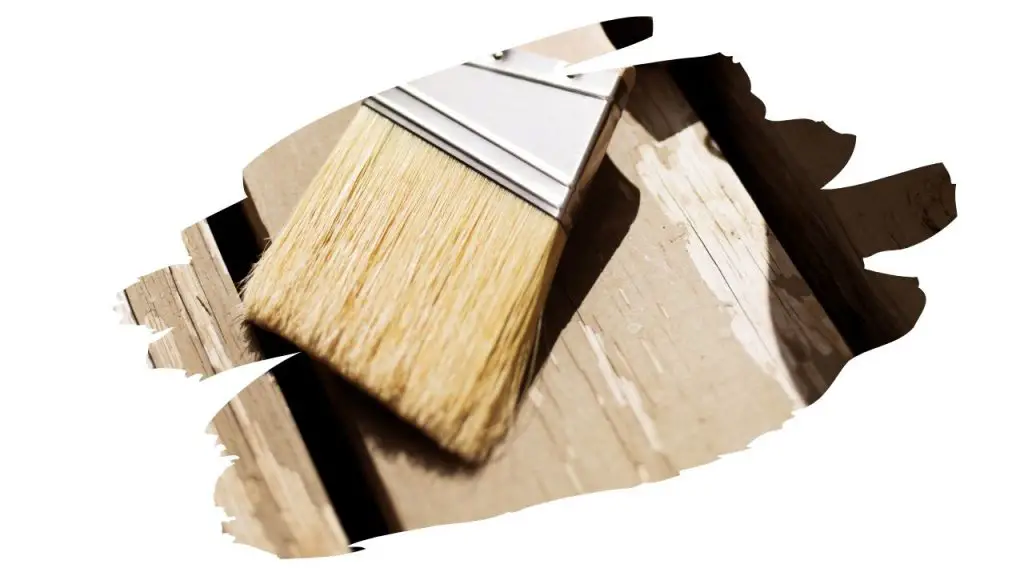Sealing wood is – without a doubt – one of the most important steps in protecting it from the elements. Between sunlight, wind and rain, any lumber that will spend most of its time outdoors is going to come in for a tough time.
This is why outdoor constructions, such as fences and decking, need a sealant that can effortlessly keep out rain, moisture, bugs and insects.
Which is why Thompson’s Water Seal is such a great product. Designed not only to protect your wood decking from water and mildew, it can even guard against UV rays too.
But, while this affordable sealant can protect against a range of wood-weathering elements, it does tend to come in a limited color range.
Available in 5 colors, (and a basic clear coat), there aren’t a lot of options for when you have your heart set on giving your deck a unique hue.
Which is where wood stain comes in. Wood stain comes in a very wide range of color tones. You can get it in traditional brown, black and grey, as well as blue, green and red tones too.
So if you want outstanding stain color and sealing protection all in one go, the answer seems obvious; just mix that stain and sealer together… right?
But can you really mix any stain product with Thompson’s Water Seal?
Oil based stains can be mixed with Thompson’s Water Seal. However, water based stains cannot. This is because Thompson’s Water Seal penetrating timber oil works by seeping into wood pores. This allows it to effortlessly prevent water from getting in. So if you were to try to mix a water-based stain into this oil sealant, they simply won’t blend together.
In fact, if you went ahead and mixed water-based stain into oil-based sealer, the stain will simply float to the surface and hang there suspended atop the oil.
Still, Thompson’s penetrating timber oil is just one of a wide range of water seal products. And not all of Thompson’s sealant range will take to oil stains well either.
And why is that? Well, it’s because not all of Thompson’s Water Seal products are oil-based. For example, water-based products such as Thompsons Water Seal stain won’t blend with oil-based stains.
So if you want to give your deck a rich natural stain color, what are you to do?
Are your only staining color options limited to Thompson’s Water Seal stain range? Or is there a way you can get both superb water protection and fantastically timber hues in a single sealing coat?
Well, lets get into all that and more below…

This post may contain affiliate links to products that we receive a commission for (at no additional cost to you). Learn more here.
First Off, Can You Really Mix Stain And Sealer Together?
As long as you mix oil with oil and water with water, you should be on track to get them to blend.
In other words, oil based stains will mix with oil based sealers. These should blend if you really shake them together well.
Water based stains can mix with water based sealers, however they don’t blend as well as the oil + oil combination.
Related Post: Boiled Linseed Oil vs Thompson’s Water Seal: Which One Is Better For Wood?
So You Can Only Add Stain To Sealers With Oil-Based Blends?
Yes you can add oily stain to oily sealer, but it is still not best practice.
You see, stain and sealer both work in the same way, as in they work by sinking into those open wood pores.
Stain seeps into the pores, coloring timber from the inside out. And sealer seeps into pores, giving timber deep ingrained protection from water-damage.
When you blend the two together, you reduce the effectiveness of both solutions. A stain + sealer blend won’t stain that decking as well as plain stain will. And it won’t protect for as long as pure sealer will.
Related Post: Can You Really Use Decking Stain On Garden Furniture?
Can Thompson Water Seal Be Used On Stained Wood?
Okay, so now that you’ve decided mixing sealer and stain together may not be the best way forward… what next?
Well, the obvious solution here is to apply stain first then water seal after. Right?
Not quite. This question of blending stain and sealer together comes up because you can’t apply one over the other.
Like we covered earlier, both sealer and stain work in the same way; their goal is to fill in those pores.
So, if you were to apply sealer over a stain, it won’t be able to sink into wood pores very well since the stain solution is already taking up that space.
In other words, your choice is less about whether you can apply both stain and sealer. Rather, you have a choice between deciding on stain or sealer for your deck.
If you are happy with the natural color of your deck, then seal it with a clear sealant. This will protect your decks color from weathering due to UV rays. Also, it is worth noting that sealant will need a touch up every 3 to 4 years.
If you want your deck to have a different tone to the one it has now, then you will need to opt for a stain coat instead. And that stain will need a touch up every 1 to 2 years.
Related Post: What Is The Best Plywood For Outdoor Use? (Solved!)
To Sum Up…
Although you can mix an oil based stain to help tint an oil based sealer, it’s not going to turn out the way you’d like.
By mixing stain and Thompson’s Water Seal you make them both less effective at their jobs (which is adding color and protecting wood respectively).
Instead, you need to choose between adding color or long-lasting protection, and decide upon one or the other for your deck.
If your heart is set on a specific hue, then stick to staining the deck. If you are happy for your deck to keep its natural color, then go with Thompson’s Water Seal (or use one of their range of waterproofing stain products).

![Will Tacky Wood Stain Eventually Dry? [What To Do When Stain Is Not Drying] will tacky stain eventually dry](https://www.thewoodworkplace.com/wp-content/uploads/2022/10/Banner-502-150x150.jpg)

